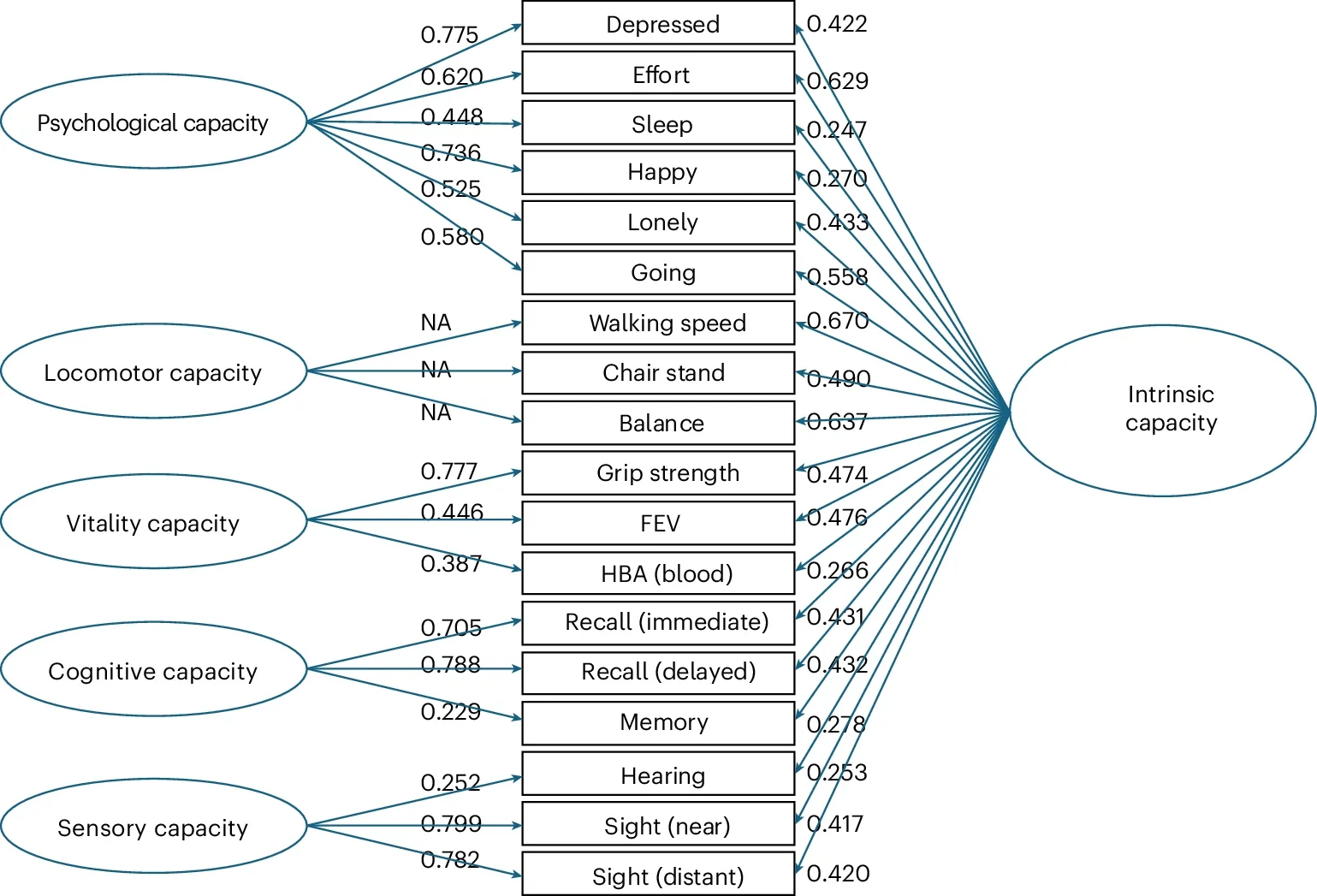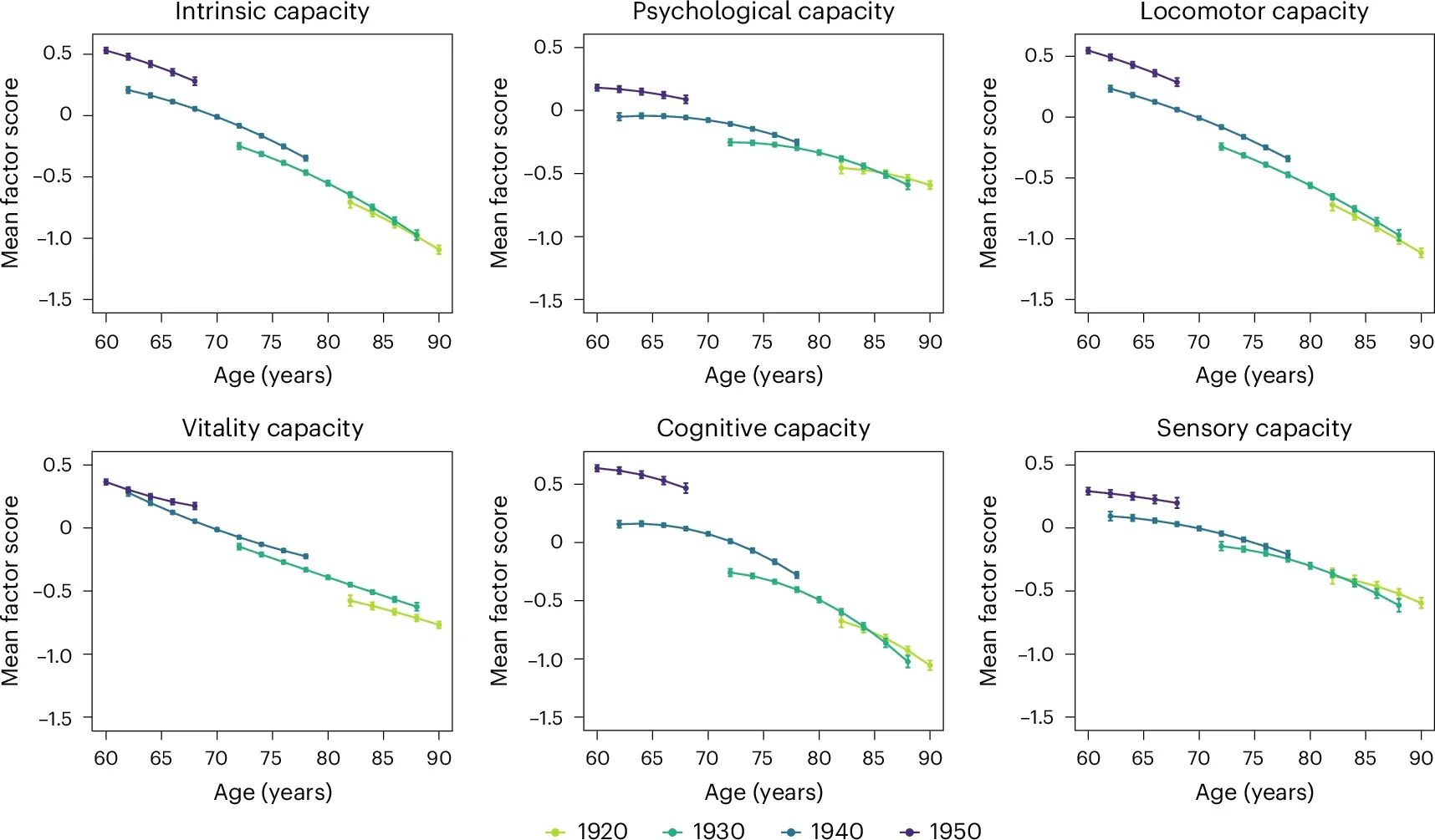Over the last century, life expectancy has steadily risen, marking a profound shift in global demographics. Longer lives, now commonplace in many developed nations, are primarily due to improved survival rates at older ages.
However, a recent study by the Robert N. Butler Columbia Aging Center at Columbia University’s Mailman School of Public Health sheds light on an even more intriguing trend: older adults today exhibit higher levels of physical and mental functioning compared to previous generations.
Traditional health metrics often focus on the presence or absence of disease, a perspective that provides limited insight into the actual well-being of aging populations.
While advances in healthcare allow individuals to survive conditions that were once fatal, they also contribute to an increased prevalence of chronic illnesses among older adults. Yet, survival alone doesn’t paint the full picture.

For instance, medical interventions such as joint replacements now restore locomotor capacity, reducing the disability burden from conditions like osteoarthritis. At the same time, the natural biological changes of aging often result in subtle declines in physical or cognitive capacity, even in the absence of disease.
These complexities suggest that health, particularly in older adults, is better understood through the lens of functionality—how well individuals can perform daily activities and maintain independence.
The study, published in Nature Aging, emphasizes functioning over mere survival. Using data from the English Longitudinal Study of Aging, researchers evaluated trends in cognitive, locomotor, psychological, and sensory capacities across different birth cohorts.
Related Stories
Their findings reveal a remarkable improvement in the intrinsic capacities of older adults. For example, a 68-year-old born in 1950 demonstrated abilities comparable to a 62-year-old born a decade earlier.
“These improvements were large,” noted John Beard, lead author of the study and a professor at Columbia University. “A 68-year-old born in 1950 functioned similarly to a 62-year-old born in 1940. Comparing someone born in 1950 to someone born in 1920 would likely show even greater gains.”
Parallel analyses using data from the China Health and Retirement Longitudinal Study revealed similar trends. However, the shorter follow-up period in the Chinese study limited the scope of comparison. Both studies suggest a broader shift in health trajectories, driven by advancements in education, nutrition, sanitation, and medical care over the 20th century.
The research underscores that functionality, rather than disease prevalence, aligns more closely with what older individuals value: independence and quality of life.

Jay Olshansky, a professor at the University of Illinois, emphasized the significance of this approach. “This study shows that intrinsic capacity—what really matters to people as they age—is inherently modifiable. With this evidence, we see that medical science can enhance intrinsic capacity, providing a hopeful message for the future.”
Despite these gains, challenges remain. The increasing prevalence of obesity and other lifestyle-related conditions could reverse these positive trends. Furthermore, socio-economic disparities suggest that not all population groups have experienced these improvements equally. Advantaged groups may have reaped greater benefits, leaving others behind.
The study highlights the need to continue focusing on functional health metrics rather than traditional disease-oriented approaches. Intrinsic capacity provides a more comprehensive understanding of aging, capturing the complex interplay of biological, psychological, and environmental factors. By promoting healthy aging through targeted interventions, society can ensure that future generations enjoy longer, healthier lives.

Beard tempered his optimism with caution. “We were surprised by just how large these improvements were, particularly for those born after World War Two,” he said. “But there’s no guarantee these trends will continue. Changes like rising obesity rates may see these improvements plateau or even reverse.”
The findings also suggest that health policies should address disparities and ensure equitable access to resources that promote functional health. By investing in preventive care, early interventions, and supportive environments, societies can enhance the quality of life for their aging populations.
The idea that “70 is the new 60” resonates with many, supported by data showing significant gains in functional capacity.
As Beard remarked, the trends reflect not just medical advancements but also the cumulative benefits of societal progress in education, sanitation, and nutrition. The study provides a hopeful narrative for aging populations, emphasizing that healthy aging is achievable and modifiable.
Looking ahead, continued research will be vital in monitoring these trends and addressing emerging challenges. By prioritizing functional health, policymakers and healthcare providers can ensure that aging populations not only live longer but thrive in their later years.
Note: Materials provided above by The Brighter Side of News. Content may be edited for style and length.
Like these kind of feel good stories? Get The Brighter Side of News’ newsletter.
The post Healthier aging: Study finds older adults are functioning better than ever appeared first on The Brighter Side of News.